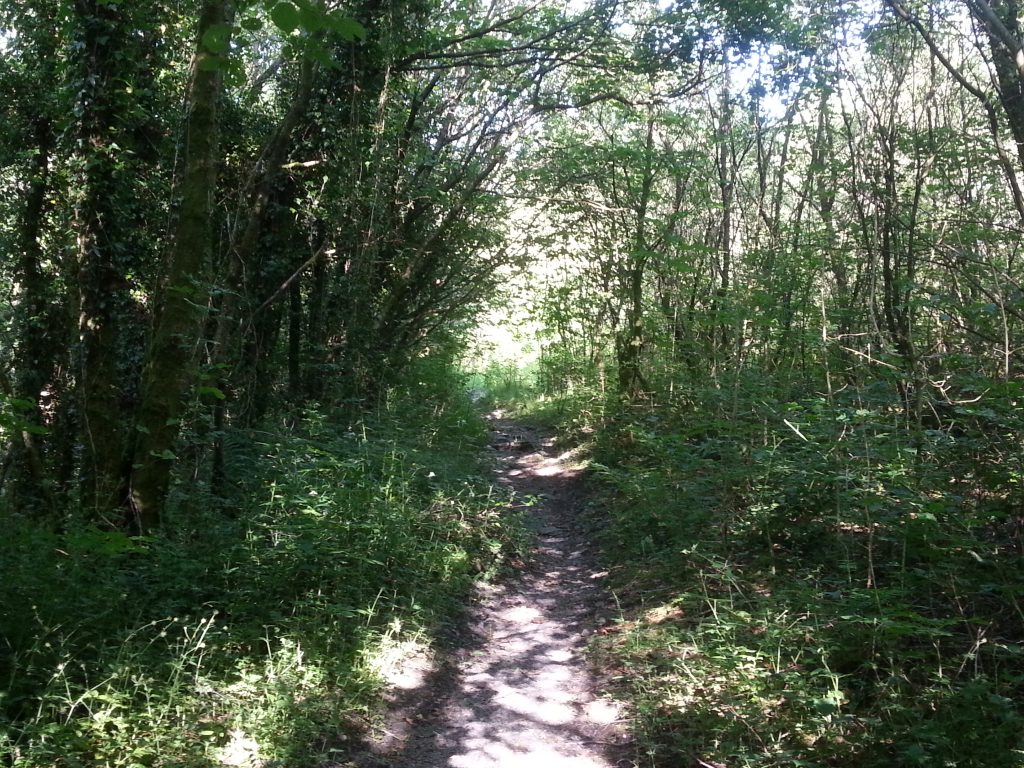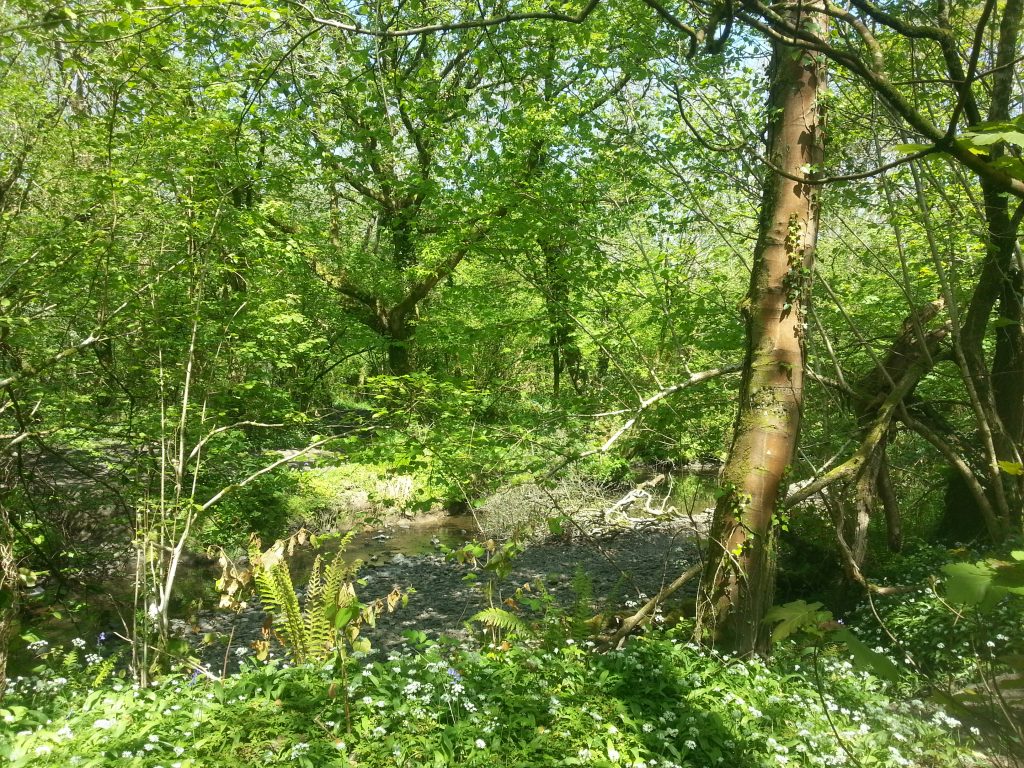
Appreciating the woodland aesthetic
I thought up this article from my readings of mindfulness and Zen philosophy and the many occasions from walking through the woodlands in my local countryside while deep in conversation with Comicus as if we were the peripatetics of Aristotle; talking while on the move. We go about talking in this woodland passing tree after tree and the occasional brook but are we really registering the natural beauty of it all? Are we living in the moment? Here is one picture of some woodland:

When the mind is entirely focused on talking there is no ‘registering the natural beauty of it all’ or ‘living in the moment’ there is only the world of abstraction. Don’t get me wrong we appreciate the setting for our disquisition and debates in these woodlands of Britain but we only give the woodland aesthetic only partial appreciation, a cursory glance rather.
Thinking mode and being mode
Talking requires thinking as you must think in order to serve up the next sentence during the conversation you find yourself in. In such an activity you are in a state of abstraction and not attending to the present; not observing your immediate reality about you to your full potential; you are in a thinking mode and not in a being mode.
For those of you who wish to be immersed as much as possible in the aesthetic wilderness you find yourselves in, to optimise your awareness of your immediate surroundings, I strongly recommend you adopt the being mode of mindfulness in the conventional sense, as opposed to naturalistic mindfulness, so mindfulness is defined here:
“mindfulness means paying attention in a particular way; on purpose, in the present moment, and non judgmentally.”
My favourite definition by Jon Kabat-Zinn.
The default state of mind that we find ourselves adopting all the time is that of the thinking mode and from that pre-condition all the other outgrowths associated with thinking like deciding, planning, ruminating, judging and worrying etc. comes to the fore. But If we make the effort to switch gears and adopt mindfulness instead, then, we will see our surrounding environment in a very different way. Here are more pictures:


In adopting mindfulness, we notice more shapes, angles, colours, depth and all the other minute but rich details of the objects in our awareness same goes for even unremarkable objects; but through the thinking mode our default state of mind, all the rich perceptions of reality is usually filtered out. The being mode of mindfulness however, is your mind taking a break from that incessant thinking mode. Being mode is like a mindfulness vacation!
To just simply see!
Zen Master Thich Nhat Hanh illustrates to us mindfulness about a sun setting:
“When you look at the sunset– you know that the sunset can last only 5-10 minutes. During this 5 or 10 minutes you look deeply. There is this wonderful sunset in this second and the next second another wonderful sunset. You observe hundreds of seconds of this sunset. Hundreds of different moments. Every moment is a treat. Every moment is a joy.”
Now Imagine in Thich Nhat Hanh‘s sunset scenario someone saying ‘what a beautiful sunset’ is the individual in question paying attention to the sunset? Or are they paying attention to the words? I think that one part of their mind is attending to the sunset and the other part to the words they have spoken. The mind here is multitasking and instead of being deeply immersed through mindfulness towards viewing that sunset in ‘hundreds of different moments’ is perverted as a compromised view! This person is not seeing the sunset as simply ‘thus’ but fracturing it up with the discrimination of the mind’s thinking! Sometimes there is wisdom in just shutting up!
Now imagine those old video games in which you have those sort of levels that has each tree as rendered the same height, shape and texture. As the player you go on to explore the level on the way passing the same clone rendered tree after the other; no variation and no character!
But the woodland in real life though, as a natural construct, as something which has unfolded by itself into being in this world; did not need the artificial re-arranging by humanities’ hand to be considered as art, as an aesthetic which draws our attention to it with great interest. There are differences between different species of trees and even to those trees being the same species, each tree has its unique geometrical proclivity, the asymmetry between different trees especially the branches with some lengthier than others and some are more crooked along with all those imperfections, the crookedness, the scars, the weathering, the chaos in different patterns of the geometry of the land that contributes to new detail to be observed upon its beholder. All that stuff gives it the natural aesthetic.

The artist specialising in realist portraits is painting on his canvas the wilderness he observes, a brush of paint there, observe again, a brush of paint there, observe again; rinse and repeat until the painting is complete. The artist despite his effort cannot capture the true beauty of the wilderness because the product of his labour is only an artificial intimidation of the real thing.
The state of mindfulness, I argue, unlocks the best way to fully appreciate nature as its own art. The natural world unfolds as a planet spanning art gallery free for the public to admire and yet most waft on by as if it were all invisible! Next time you have the privilege of escaping your concrete jungles give a moment to mindfulness and really see it all before you as simply ‘thus’.

